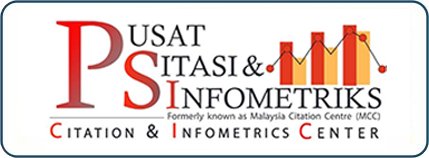21st Century Skills in Practice: Malaysian Trainee Teachers’ Experience at Managing Students’ Learning during the Pandemic
Aplikasi Kemahiran Abad Ke-21 dalam Pengurusan Pembelajaran Murid semasa Pandemik: Tinjauan Pengalaman Guru Pelatih
DOI:
https://doi.org/10.33102/sainsinsani.vol6no1.227Keywords:
Abad 21, Pandemik, Pengajaran dan Pembelajaran, PraktikumAbstract
Teaching practicum is an essential part of teacher-training that provides real classroom engagement for a beginner teacher. It is considered as one of the most critical components of teacher preparation with the greatest impact on teacher quality (Mtika, 2011; Zeichner, 2010; Graham, 2006; Tang, 2003) and is significant for the development of their pedagogical skills (Kauffman, 1992). The sudden upsurge of the Covid -19 infections around the world in the first quarter of 2020, witnessed massive closure of schools worldwide in order to contain the spread of the pandemic. This unexpected turn of events had flipped the more traditional face-to-face method of teaching and learning into distance learning that requires 21st. Century technology and skills. This paper explores the experience of a group of trainee teachers from an institute of higher learning in Malaysia, at managing this unprecedented challenge in delivering education remotely via technology. Data were collected from interviews and supplemental written records in the form of lesson plans, teaching evidence, and online tools employed for teaching and learning. The findings show that the trainee teachers undergo varied and often challenging experiences in ensuring the continuity of curriculum-based education and the students’ progress in learning. Their successes in delivering the lessons amidst the novel encounters are the epitome of resilient and flexible teachers in the making.
Downloads
References
Berge, Z. (1997). Characteristics of online teaching in post-secondary, formal education. Educational Technology, May-June, 35-47.
Boholano, H. B. (2017). Smart social networking: 21st century teaching and learning skills. Research in Pedagogy, 7(1), 21-29. doi: 10.17810/2015.45
Caena, F., & Redecker, C. (2019). Aligning teacher competence frameworks to 21st century challenges: The case for the European Digital Competence Framework for Educators (DIGCOMPEDU). European Journal of Education, 54(3), 356-369. doi: 10.1111/ejed.12345
Chavan, M., Yoshikawa, H., & al. (2013). The future of our children: Lifelong, multi-generational learning for sustainable development. Authored by the Thematic Group on Early Childhood Development, Education and the Transition to Work. U.N. Sustainable Development Solutions Network.
Chin, C. (2020, March 29). Learning musn’t stop with Covid-19. The Star. Retrieved from https://www.thestar.com.my/news/education/2020/03/29/learning-mustnt-stop-with-covid-19.
Choi, H. J., & Park, J. (2006). Difficulties that a novice online instructor faced: A case study. The Quarterly Review of Distance Education, 7, 317–322.
Crawley, F. E., Fewell, M. D., & Sugar, W. A. (2009). Researcher and researched: The phenomenology of change from face-to-face to online instruction. Quarterly Review of Distance Education, 10(2), 165-176. https://www.learntechlib.org/p/103635/.
Crick, R. D., & Wilson, K. (2005). Being a learner: A virtue for the 21st century. British Journal of Educational Studies, 53(3), 359-374. https://doi.org/10.1111/j.1467-8527.2005.00300.x
Croft, A. (2002). Singing under a tree: Does oral culture help lower primary teachers be learner-centred? International Journal of Educational Development. 22 (3–4): 321–337.
Fry, K. (2001). E-learning markets and providers: Some issues and prospects. Education+ Training 43 (4/5), 233–239. https://doi.org/10.1108/EUM0000000005484.
Kim, J. (2020). Learning and teaching online during Covid‑19: Experiences of student teachers in an early childhood education practicum. International Journal of Early Childhood. doi.org/10.1007/s13158-020-00272-6
Kim, S., Raza, M., & Seidman, E. (2019). Improving 21st-century teaching skills: The key to effective 21st century learners. Research in Comparative & International Education, 14(1), 99-117. doi.org/10.1177/1745499919829214
König, J., Jäger-Biela, D. J., & Glutsch, N. (2020). Adapting to online teaching during COVID-19 school closure: Teacher education and teacher competence effects among early career teachers in Germany. European Journal of Teacher Education. doi: 10.1080/02619768.2020.1809650
Lin, C-H., & Zheng, B. (2015). Teaching practices and teacher perceptions in online world language courses. Journal of Online Learning Research, 1(3), 275-303.
McCoog, I. J. (2008, November 08). 21st century teaching and learning. http://www.eric.ed.gov/PDFS/ED502607.pdf
Merriam-Webster Online Dictionary. (2020, October 21). Definition of Pandemic. https://www.merriam-webster.com/dictionary/pandemic.
Mtika, P. (2011) Trainee teachers’ experiences of teaching practicum: Issues, challenges,and new possibilities. Africa Education Review, 8(3), 551-567.
Mtika, P. & Gates, P. (2010). Developing learner-centred education among secondary trainee teachers in Malawi: The dilemma of appropriation and application. International Journal of Educational Development. 30(4): 396–404.
Muhyiddin, Y. (2020, Mei 16). Make online teaching the way forward. https://www.astroawani.com/berita-malaysia/make-online-teaching-the-way-forward-pm-advises-teachers-243238
Norezan, I., Azzlina, A., Rosilawati, S., & Siti Fairuz, D. (2019). Trainee teachers’ readiness towards 21St century teaching practices. Asian Journal of University Education, 15(1), 1-12.
Nurfaradilla, M. N., Hazrati, H., Siti Nur Diyana, M., & Lilia, H. (2020). Mitigating the COVID-19 pandemic: A snapshot from Malaysia into the coping strategies for pre-service teachers’ education. Journal of Education for Teaching. doi: 10.1080/02607476.2020.1802582
Osika, E. R., Johnson, R.Y. & Buteau, R. (2009). Factors influencing faculty use of technology in online instruction: A case study. Online Journal of Distance Learning Administration, 12(1). https://eric.ed.gov/?id=EJ869270
Pianta, et al. (2009). The effects of preschool education: What we know, how public policy is or is not. Aligned with the evidence base, and what we need to know. Psychological Science in the Public Interest, 10(2), 49-88.
Schleicher, A. (2020). How Can Teachers And School Systems Respond To The Covid-19 Pandemic? Some Lessons From Talis. https://www.oecd-forum.org/posts/63740-how-can-teachers-and-school-systems-respond-to-the-covid-19-pandemic-some-lessons-from-talis.
Seema, S., & Nangia, A. (2020). Online teaching during COVID 19 : Attitude and challenges faced by school teachers. International Journal of Disaster Recovery and Business Continuity, 11(1), 3012-3018.
Singh, G. (2016). Challenges for teachers in the era of e-learning in India. International Journal of Multidisciplinary & Allied Studies, 3(2), 14-18. doi: 10.19085/journal.sijmas030201.
Sivan, A. & Chan, D.W.K. (2009). The roles of supervised teaching practicum and peer observation in teacher education in Hong Kong: Implications for partnership. Teacher Development. 13(3): 251–266.
Umi Kalsom, M. S., Hutkemri, Z., Suzieleez Syrene. A. R., Abd Razak, Z., & Riyan Hidayat. (2019). Roles of self-directed learning and social networking sites in lifelong learning. International Journal of Instruction, 12(4), 167-182.
UNESCO. (2020, April 23). UNESCO COVID-19 Education response: Education Sector Issue Notes. https://en.unesco.org/covid19/educationresponse/issuenotes.
UNICEF. (2020, Oct 5). Teachers: Leading in crisis, reimagining the future. https://www.unicef.org/press-releases/teachers-leading-crisis-reimagining-future
United Nation. (2020). Policy brief: Education during COVID-19 and beyond. https://unsdg.un.org/resources/policy-brief-education-during-covid-19-and-beyond#:~:text=The%20COVID%2D19%20pandemic%20has,190%20countries%20and%20all%20continents.&text=Education%20is%20not%20only%20a,of%20all%20other%20human%20rights.
Woodcock, S., Sisco, A., & Eady, M. (2015). The learning experience: Training teachers using online synchronous environments. Journal of Educational Research and Practice, 5(1), 21–34.
Downloads
Published
How to Cite
Issue
Section
License
Copyright (c) 2021 Norhaili Massari, Noor Saazai Mat Saad, Fariza Puteh-Behak, Sakinah Ahmad, Hazlina Abdullah, Haliza Harun, Normazla Ahmad Mahir, Suzanah Selamat, Hazleena Baharun, Maziahtusima Ishak

This work is licensed under a Creative Commons Attribution 4.0 International License.
1. Author holds the copyright of the article.
2. Jurnal Sains Insani owns the rights to publish the article. The writer may request permission to republish the article from the editor.
3. Jurnal Sains Insani follows the APA (American Psychological Association) style for all in-text citation and list of bibliographies.











